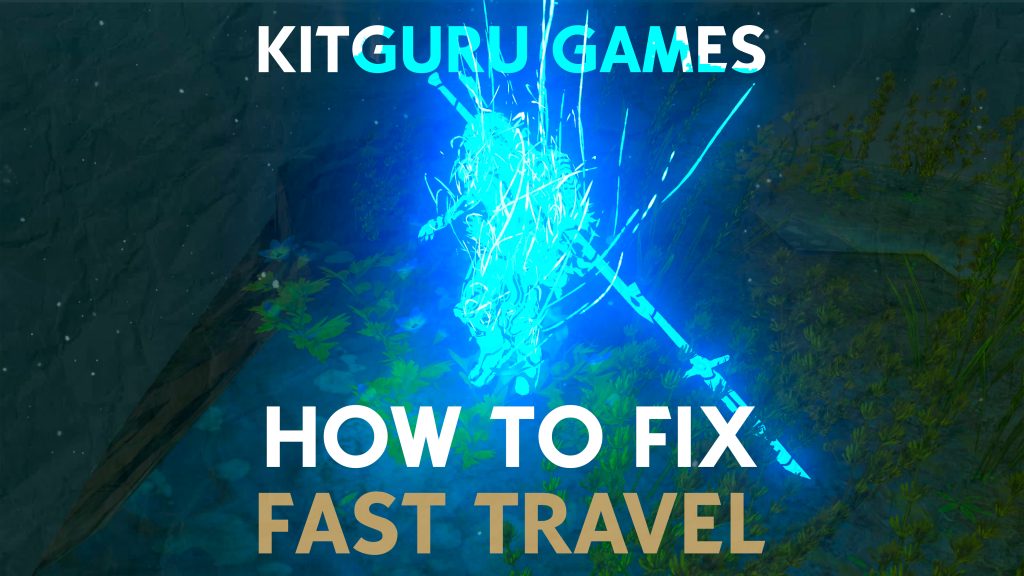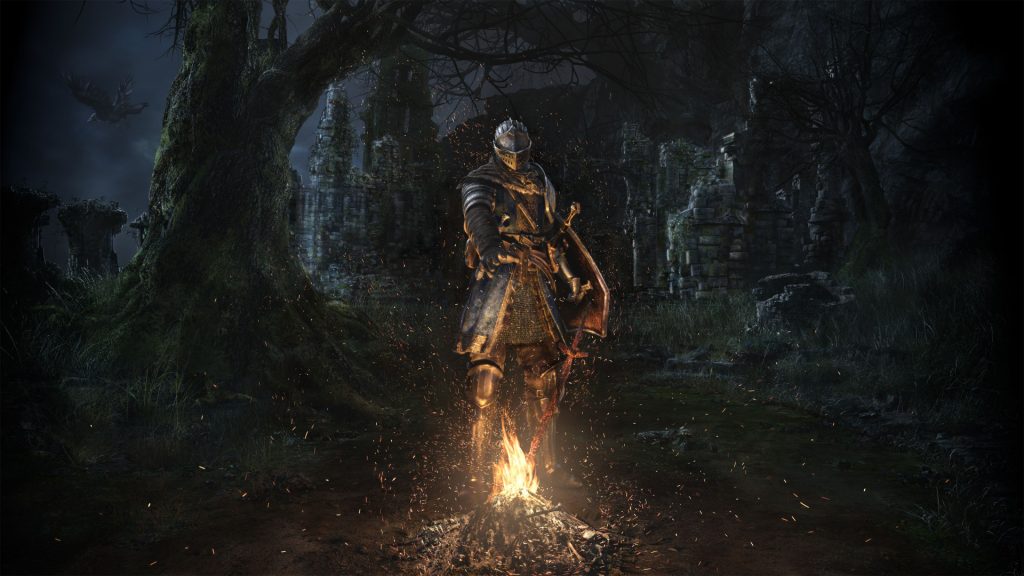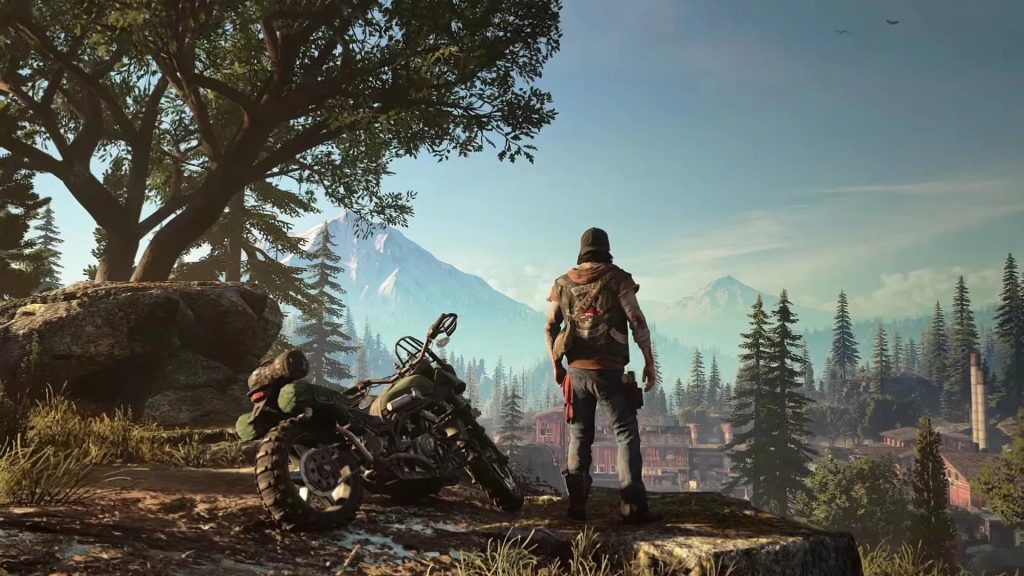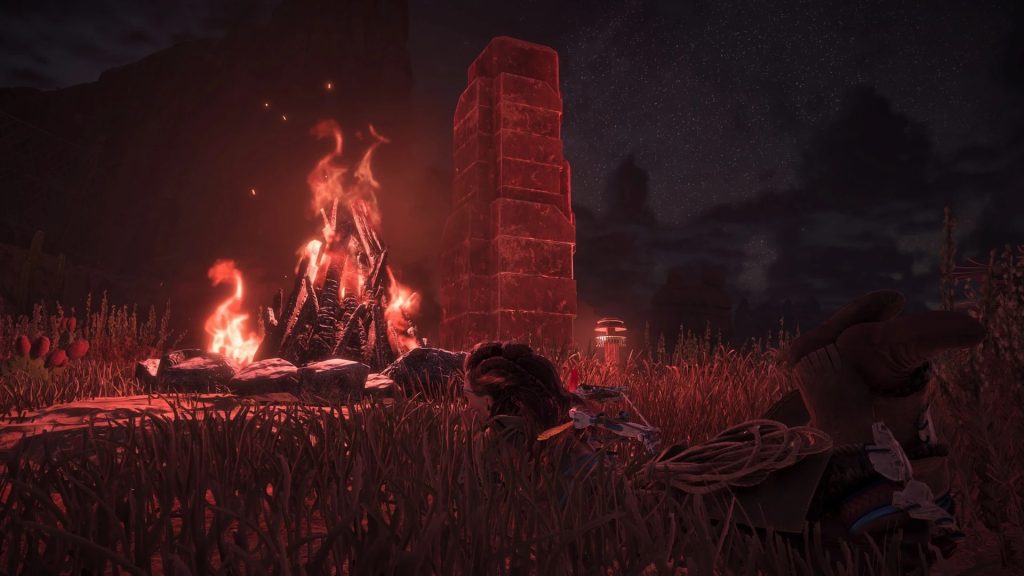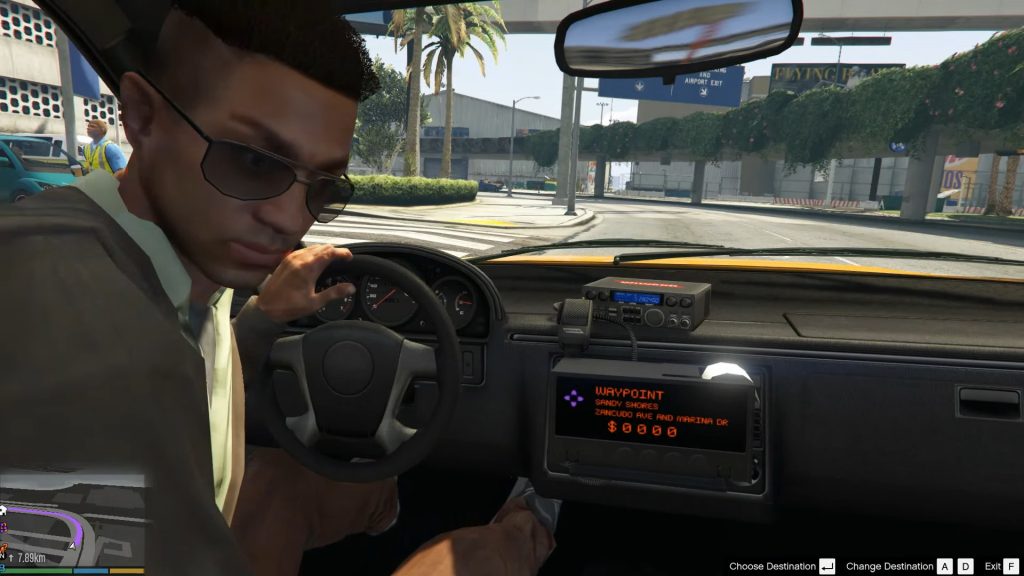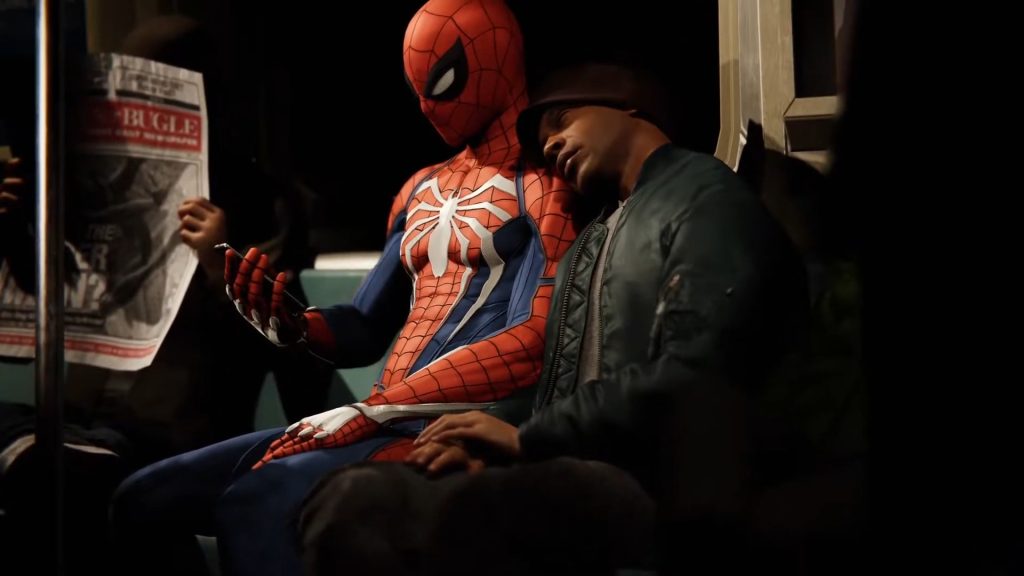The existence of fast travel as a function of game design has always been at odds somewhat with the core ethos of most games which use the feature. As games have gotten bigger and their worlds increased tenfold in size, the assumed necessity of some form of fast travel has become more and more of an absolute. The arguments for fast travel are clear: it’s a quality of life feature which offers a welcome convenience…MAYBE at the cost of some immersion.
Fast travel in games won’t be going away any time soon – and nor should it – but it is interesting to examine the varying ways that developers choose to implement the feature in their games; be it narratively, mechanically or functionally. Quite surprisingly, over the decades, studios have tackled this seemingly simple issue in MANY ways – for better and worse.
Unlocking Fast Travel
Before looking at the various ways in which fast travel itself is executed, it is worth observing the choices developers have made when it comes to unlocking the ability itself. Upon its introduction with the likes of Far Cry 3, Ubisoft’s ‘tower climbing’ mini-game took the industry by storm.
For those who don’t know, Ubisoft towers is a term used to describe the gameplay loop of unlocking fast travel points by climbing to the top of a tower or some other structure in order to ‘scan’ the area.
Though its popularity has waned over the years due to its relative mundanity and repetitiveness, many franchises have utilised Ubisoft towers in their games. Of course, there is Ubisoft themselves, the pioneers of the technique, who featured subtle variants of the same fast travel unlocking mechanic in most of its open-world games including but certainly not limited to the aforementioned Far Cry as well as Assassin’s Creed. That said, you also had 2018’s Spider-Man which opted for a slightly different version of Ubisoft towers, instead making them police stations which required a small hacking mini-game – to give an extra example.
Another common way to unlock fast travel points is for your character to simply pass by a campfire or hut or whatever the location may be. This not only takes away the inconvenience of doing the same climbing challenge over and over just to unlock what is essentially a quality-of-life feature, but also allows for a more dynamic discovery of the map and its various points of interest.
Unlike the Ubisoft towers, which reveal a chunk of the map at a time alongside multiple fast travel points, games such as Ghost of Tsushima; the Horizon series (and of course many others) add fast travel points as and when they are discovered – maintaining a greater sense of immersion overall.
The last method of fast travel unlock which I wish to discuss is what I will call checkpoint-based unlocks. Seen in games such as Dark Souls, this method includes much more purposeful intent with its fast travel, requiring you to reach a certain location and activate the point manually. From there, you can then use these points to travel to other previously-activated locations. The benefit to this is that it allows the unlocking of fast travel to become a challenge in and of itself – if the developers desire.
Of course, there are the Soulsborne bonfires and lamps which are often placed in specific and strategic ways to mark a literal checkpoint in your progress through the world. You have more casual versions of this method too, with 2018’s God of War using purposefully placed portals to let you teleport around between them.
Each of these design decisions have their advantages and disadvantages, and for the most part there isn’t a one size fits all solution to fast travel – nor should there be. The method of unlocking fast travel in a game should be highly dependent on the game itself and what experience the developers are hoping to create. Yes, fast travel is a function of convenience, but it is also a function of game design.
Gameplay Functions of Fast Travel
Speaking of, many developers have over the years found a bunch of different ways to ingrain the concept of fast travel into the world itself, inventing different functions and effects which occur as a result of using – or wanting to use – fast travel. Some of these are more directly impactful than others, but all of them have an effect on your gameplay experience.
One of the more common – though highly appreciated – gameplay functions which is affected by fast travel is the time of day. Depending on the title, this could have gameplay ramifications (such as if enemies are more aggressive or less common at night). Alternatively, the choice to pass time when fast travelling could merely be an artistic one, giving you a greater variety of skyboxes to stare at, or simply immersing you further in the roleplayed reality of the world itself.
A personal favourite of mine is Days Gone’s fast travel. With a core part of the gameplay being focused on micromanaging your motorbike, it does not come as a surprise to see that fast travelling in Days Gone requires you to have fuel in your bike. Not only that, but the distance you can travel is dependent on how much fuel you have.
This not only allows for a more conservative use of the mechanic at the start, but the usefulness of fast travel itself is directly tied to your own progress and evolution within the game. By the time you’re able to travel from one side of the map to another, it would have felt earned, as you worked hard to upgrade your bike over dozens of hours.
Similarly, some games require a payment of sorts to travel from one place to another. Typically used for immersion purposes, these Skyrim carts, GTA taxis or Red Dead Stagecoaches will take you to where you need to go – for a monetary cost.
Most games that offer such services also include other ways to fast travel later on, and so these types of travel spots are usually used more as flavour text for the world. Still, their inclusion is always appreciated.
This gameplay-affecting cost for fast travel has also been implemented in less-than-stellar ways. Going back to the Horizon series, Zero Dawn in particular featured a rather unnecessary ‘travel pack’ mechanic. These single use items would let you fast travel from any spot, instead of requiring you to find a campfire.
The issue with this is twofold: the game already features plenty of campfires around the world – too many some might say – and so making this already menial task more so the case is rather redundant, especially as it does not add to the game’s immersion. The second point of failure for this system came in the fact that a number of merchants across the world will sell you an infinite travel pack for a relatively modest price – making the already redundant mechanic even more so (especially as the infinite travel packs aren’t a core part of the story or its progression). Fortunately, Guerrilla Games greatly improved this for the sequel.
Finally, I wanted to briefly mention that not all games go to such lengths to try and add to fast travelling. Some titles simply let you travel wherever you want, whenever you want with no limitations in place. These can sometimes break the open worlds themselves, reducing them to a series of isolated points of interest. Fortunately, this isn’t always the case, especially if work was done on the narrative side to explain the lack of restrictions. This is where we get to my favourite part: talking about all the different ways devs have sewn fast travel into their games through narrative or immersive contextualisation.
Narrative / Immersive Contextualisation of Fast Travel
While we touched on it a bit earlier with GTA’s taxis, I wanted to spend a good portion of time focusing on the ways in which games have weaved fast travel into the lore or narrative of the world itself, making what is a physics-breaking power in reality feel more grounded in the game’s universe.
First, going back to GTA quickly, the Taxis are of course as I mentioned earlier used primarily for immersion purposes, with you being able to approach a taxi (or call one on your phone), enter the vehicle, pick your destination from the dashboard screen and sit back as your personal chauffeur takes you wherever you please.
Alternatively, you could simply skip all this, and even with GTA V’s notoriously long loading screens (especially back in the day), would get to wherever you needed to go ‘faster’. So while entirely unnecessary, its addition is wholly appreciated and even allows for more grounded justifications for the more cutthroat versions of fast travel. “Oh, there’s a boring blank loading screen? Luckily my immersion isn’t broken because I know you can take Taxis across the map, so my character is probably just doing that to travel.”
Of course, no one would talk to themselves in this way when playing a game, but on a subconscious level your mind does wander to thoughts such as these, especially when you are locked in a loading screen. Again, as I mentioned earlier, this kind of contextualisation in combination with an appropriate change in the time of day can do wonders to trick the brain and ensure immersion is maintained as much as possible,
Having belaboured the point, probably too much, I will now more simply point out a bunch of neat little immersion enhancers from across the industry. There’s the Sheikah Slate from Breath of the Wild, which – while it does not explicitly explain how the slate allows you to fast travel – comes with a nifty lil' animation of Link pulling out the slate alongside a bunch of blue glowing tendril things which is some wild Sheikah technology. How exactly it works doesn’t matter, as long as the audience understands that each time Link fast travels, he’s doing that in-universe thanks to the Sheikah Slate.
Moving on to slightly-slower-but-still-fast-travel…travel, You’ve got Watch Dogs Legion’s Auto Drive mechanic for all its vehicles. Like with GTA, you can skip straight to your destination, or you can let the near-future tech of Watch Dogs’ dystopian London drive you using autopilot while you listen to the radio. Tying the feature directly into the narrative and technological state of the world keeps from causing any dissonance.
Horses in a lot of games will seemingly appear out of nowhere whenever you call, even if you last left them stranded in the middle of a random island. Many games have used flavour text in order to help maintain the illusion. Ghost of Tsushima for example, has a side character offer a small line right near the beginning of the game explaining how Samurai horses are trained to always come to their master. While I still abandoned Nobu at the oddest of places, when I called for him and he trotted along a couple seconds later, I was no less immersed. Most games with horses in them feature some similar explanation – and the ones who don’t should.
Going back to Zelda briefly, BOTW’s horses would interestingly stop following you once you got out of earshot as your calls could no longer be heard. While a cool and immersive mechanic, the game does offer a couple ways to circumvent this. You can go to any stable and have the workers there essentially find your horse and bring it back (via a brief loading screen of course), or you can have the horse teleport right next to you whenever and pretty much wherever? How does the game explain this? It’s simple: Sheikah technology. Again, I don’t need to know how it works, but just that it does work and why.
Finally, I want to give a nod to those little extra touches of personality that devs rarely include. Of course, many of the prior examples added personality to each game, but I do want to shout out Insomniac’s Spider-Man games. With the PS5 versions in particular, the game requires essentially no loading at all. Despite this, the folks at Insomniac added a bunch of humorous fast travel animations showing Peter or Miles taking the subway dressed as Spider-Man – to comedic effect.
Similarly, the transition animations between the two Spider-Men when you switch characters are entirely unnecessary but greatly appreciated as not only are they optional, but also give these characters more depth as you learn what heroics they were up to while you were swinging across the other side of the city.
I could go on and on, talking about all sorts from the sound design of fast travel to its cinematography, but I’ll leave it there for now. I’ve grown to appreciate the many different ways that developers have used fast travel in their games. Hopefully now you do too.
Discuss on our Facebook page HERE.
KitGuru says: Have you ever thought deeply about fast travel? What game does the feature best in your opinion? Where do you sit on the speed vs immersion spectrum? Let us know down below.
 KitGuru kitguru.top – Tech News | Hardware News | Hardware Reviews | IOS | Mobile | Gaming | Graphics Cards
KitGuru kitguru.top – Tech News | Hardware News | Hardware Reviews | IOS | Mobile | Gaming | Graphics Cards


